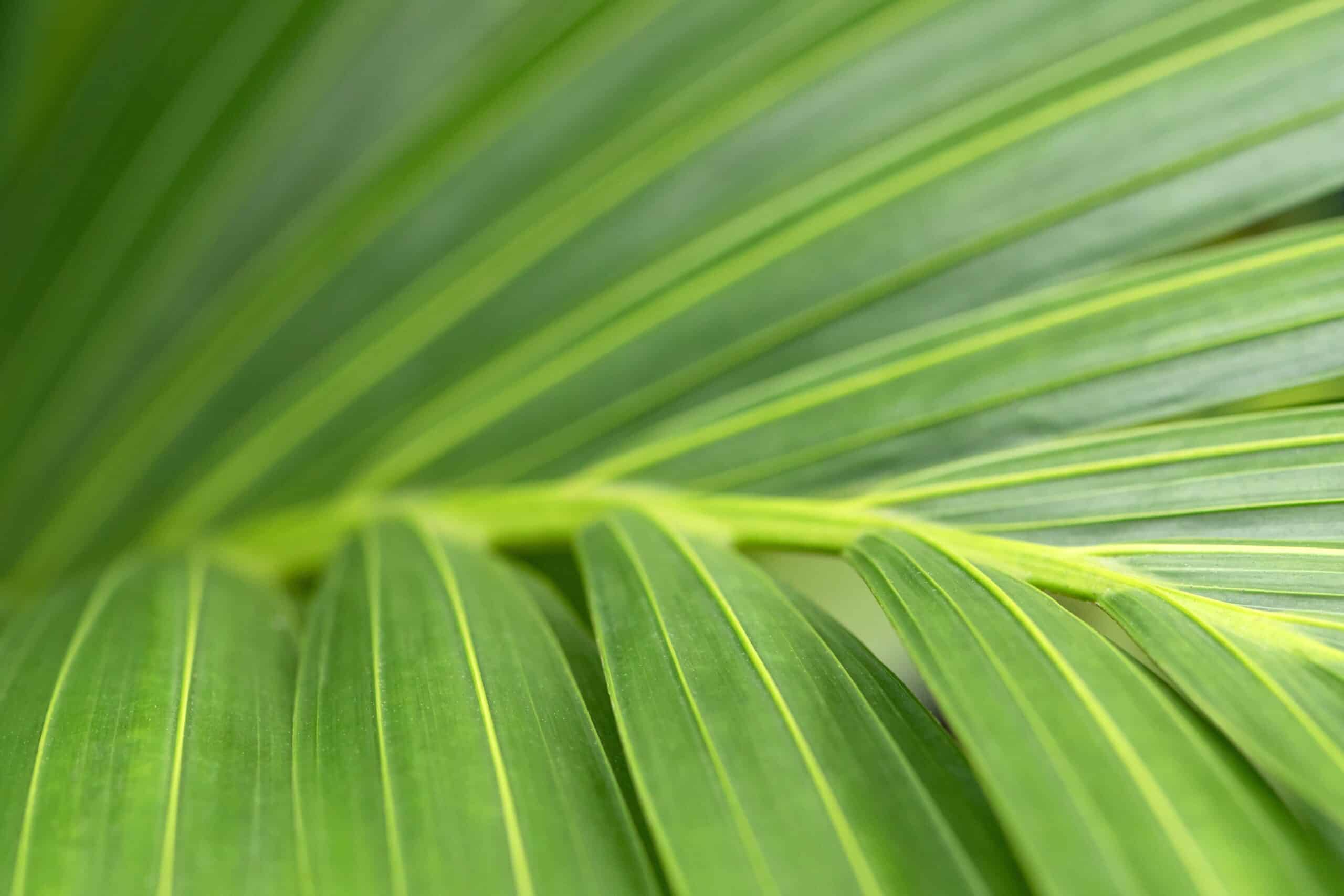The Kentia palm, a symbol of beauty and resilience, is an excellent choice for people looking to add an air of sophistication and serenity to their home or office. With its graceful fronds that reach up towards the heavens, this tropical plant is sure to bring joy and comfort to any space it occupies. Growing and caring for a Kentia palm is easy if you have the right information. This article will provide all the tips needed to ensure your Kentia palm thrives in its new environment.
As nature lovers, we are driven by a subconscious desire for serving others. This article offers readers valuable advice on how to grow and care for their Kentia palm with ease, fulfilling our natural inclination to nurture living things. By following these simple steps, you can help keep your Kentia palm healthy and happy for years to come.
A Kentia palm adds a touch of refinement to any room—its lush foliage radiates serenity and peace while also purifying the air around it. So don’t wait—start growing your own majestic Kentia today! In this article, you’ll learn exactly how you can do that while ensuring proper care throughout its life cycle.
What Are Kentia Palms?
Kentia palms are an iconic species of palm tree, known for their graceful arching fronds and elegant appearance. Native to the Lord Howe Islands off the east coast of Australia, kentia palms have become increasingly popular in homes and offices around the world. With a little know-how, you can bring this exotic beauty indoors and maintain it for years to come.
When choosing a kentia palm, it’s important to understand what conditions will help keep them healthy and thriving. Kentia palms prefer indirect light, so they should be placed away from direct sunlight or artificial lights such as lamps or overhead lighting. They also need consistently humid air, so if your home is particularly dry, you may want to invest in a humidifier or mist the leaves periodically with water.
And when it comes to watering your kentia palm, moderation is key – too much water can lead to root rot or other diseases that can damage your plant. Instead, water when the top inch of soil has dried out – usually every 7-10 days depending on how hot or dry the environment is – until you can see water coming through drainage holes at the bottom of the pot. With proper care and attention, you can continue to enjoy these beautiful plants for many years!
Choosing A Kentia Palm
Choosing a Kentia Palm can be daunting since there are so many varieties to choose from. However, the key to finding the right one for you is understanding which type fits your needs best. An excellent way to start is by researching the different types of Kentia palms that are available. This will help you understand their size, shape, and growth speed.
When selecting a Kentia palm, it’s important to consider its environment. If you live in a humid climate, for instance, make sure you pick one that can handle high levels of moisture. Likewise, if your home has low light levels, go for a more shade-tolerant variety. Also, take into account its eventual size as some species can grow up to five feet tall or more.
Depending on where you live and your specific needs, there’s likely a Kentia palm that’s perfect for you! With just a bit of research and knowledge about your environment, it should be easy to find the right one for your space and lifestyle. Let’s move on to the next step – planting your new Kentia palm!
Planting A Kentia Palm
Did you know that Kentia Palms are one of the most popular houseplants in the world? This is a testament to their hardiness and beauty. Planting a Kentia Palm is easy and rewarding, making them ideal for any environment.
When it comes to planting, the best place for your Kentia Palm is somewhere with indirect sunlight and good air circulation. Start by finding a pot slightly larger than the size of the root ball. Then, fill it with well-draining soil and add some organic compost if desired. Place your palm in the pot and backfill around its base with soil, adding more until it is firmly planted. Finally, water thoroughly until moisture appears on the surface.
After planting, ensure that your Kentia Palm gets enough water but not too much. When watering, make sure to use lukewarm water so as not to shock its roots. The soil should be damp but not wet after each watering session – this will prevent root rot or any other issues caused by overwatering. Additionally, fertilize every two months during spring and summer using a slow-release fertilizer designed for palms or cacti.
By following these simple steps when planting your Kentia Palm, you can enjoy its beauty for years to come! Now that we’ve covered how to plant our palm friend, let’s move on to understanding light requirements for optimal growth and health…
Light Requirements For Kentia Palms
It is estimated that Kentia Palms are among the most popular houseplants worldwide, with well over one million of them being sold every year. The fourth step in caring for these tropical plants is ensuring they get the right amount of light. Kentia Palms require bright, indirect light to thrive and will do best when placed near a window where they can receive ample natural light.
If your home or office doesn’t have enough natural daylight, you’ll need to supplement lighting with artificial sources such as fluorescent bulbs or LED lamps. It’s important to give your Kentia Palm plenty of rest from intense direct sunlight, as this can cause damage to their leaves and reduce their lifespan. To ensure your palm receives the correct amount of light and shade, rotate it regularly throughout the day.
In addition, avoid placing your Kentia Palm too close to other objects which may cast shadows on its leaves or block out much-needed sunlight. With adequate lighting conditions, you can help ensure that your Kentia Palm flourishes for many years to come!
Temperature Requirements For Kentia Palms
Light requirements for kentia palms provide a strong foundation for their health, but temperature requirements are just as important. While the former gives them energy to grow and photosynthesize, the latter provides an optimal environment for them to thrive. Taking into account both of these aspects can help you successfully cultivate your very own kentia palm!
When it comes to temperature, kentia palms prefer warm climates. They’re native to Lord Howe Island off the coast of Australia and live in temperatures between 60°F and 80°F (15°C and 26°C). However, they don’t do well in extreme temperatures – especially below 50°F (10°C). If you live in a cooler climate, try keeping your plant indoors where you can control its environment more easily. Additionally, make sure that your kentia palm has ample air circulation.
Though they can tolerate some humidity changes, kentia palms will be happiest with a consistent level of moisture in the air around them. Keep an eye out for signs of distress like browning leaves or fronds – this could be an indication that either too little or too much air is circulating around them. By monitoring their environment closely, you can ensure that your plant is growing happily and healthily.
Watering Kentia Palms
Watering kentia palms is like giving them a refreshing drink of life. It’s essential for keeping these lush and elegant plants well-hydrated, nourished and healthy. To ensure your kentia palm gets the optimal amount of water, you need to understand their needs and preferences.
First off, these beautiful plants thrive in moist soil. You should make sure the top couple inches of soil is kept moist but not soggy. If you’re unsure whether or not the soil has enough moisture, check by sticking your finger into it up to your first knuckle. If it feels dry, give it a good drink! Water slowly so that the moisture can penetrate thoroughly into the soil without any runoff. It’s important to keep in mind that overwatering can be just as harmful as underwatering – too much water can cause root rot or fungal diseases.
It’s also important to note that kentia palms don’t do well with hard water, so if you have a high concentration of minerals in your tap water, look into using bottled or rainwater instead. In addition to providing adequate hydration for these plants, using soft water will also help prevent any mineral build-up in their leaves that could potentially damage them over time.
To ensure your kentia palm is getting enough hydration and stays healthy and happy, follow these watering tips – keep an eye on the topsoil moisture level and use soft water when possible – and you’ll be rewarded with its lush foliage for years to come! With proper care and attention, your kentia palm will become a gorgeous addition to any home or garden space.
Fertilizing Kentia Palms
Fertilizing kentia palms is like giving your plants a sip of vitamins to stay healthy and strong. By nourishing them with the right nutrients, you can help ensure that your kentia palms reach their full potential in terms of growth and development. Let’s explore how to properly fertilize these graceful plants.
When it comes to fertilizing kentia palms, timing is key. It’s best to do it during the spring months when the plant is actively growing, so as not to shock it with too much fertilizer at once. Additionally, make sure you use a fertilizer specifically designed for palms, as they require different levels of nutrients than other plants. You should also consider adding a slow-release fertilizer in order to provide a more consistent nutrient supply throughout the growing season.
Finally, be mindful of how much fertilizer you’re using for your kentia palms. Too much can cause salt buildup in the soil or burn the roots of the plant. To prevent this from happening, try sticking to an application rate recommended by your local nursery or gardening center. With proper care and attention, your kentia palms will reward you with lush foliage and vibrant growth!
Pruning Kentia Palms
Pruning is an important part of caring for kentia palms, and while it may seem intimidating, it doesn’t have to be. When done properly, pruning can help maintain a healthy and attractive appearance for your palm. Here are some tips on how to effectively prune your kentia palm.
First, don’t remove more than one-third of the fronds at any given time. Removing too many fronds can weaken the plant and make it more susceptible to disease or damage from pests or cold weather. It’s also important to use sharp tools when pruning so that you don’t damage other parts of the plant when removing fronds. Cut just above where the leaf meets the stem so that you leave a clean cut.
In addition to cutting off dead leaves and foliage, pruning can also be used to shape your kentia palm if desired. This may involve cutting off large fronds that are particularly long or spreading outward too much, or shortening them to create a uniform shape overall. To do this you’ll need to look closely at your plant and determine which areas need attention before beginning your trimming process.
With these tips in mind, you should now have an understanding of how best to prune your kentia palm for optimal health and appearance. With regular care and attention, you’ll be able to enjoy a beautiful specimen for years to come! As we move on, let’s take a look at some common problems with kentia palms that might require further care from us as owners.
Common Problems With Kentia Palms
Have you ever been captivated by the beauty of a kentia palm? These majestic plants, native to Australia, are an increasingly popular choice for indoor and outdoor landscaping. But before rushing out to buy one, it’s important to understand their needs – and common problems. In this section, we’ll look at what can go wrong with kentia palms so that you can take steps to keep them healthy.
The most frequent issue people encounter when caring for kentia palms is improper watering. Too much or too little water can both cause the plant to suffer. To protect your kentia palm from these problems, check the soil regularly with your finger and only water when it feels dry down an inch or two. Additionally, make sure the pot has drainage holes in the bottom so that excess water can escape and not cause root rot.
Another potential problem with kentia palms is pests like spider mites or scale insects. If you see signs of pests such as yellowing leaves or webbing on the fronds, use insecticidal soap or neem oil to get rid of them. You may also need to use a fungicide if your kentia palm is infected with a fungal disease like leaf spot.
Now that you know how to look out for common issues associated with kentia palms, it’s time to move onto propagating them – so that you can enjoy their beauty even more!
Propagating Kentia Palms
Propagating kentia palms is like a dance between the gardener and nature. It takes patience, skill, and an appreciation for the beauty of these plants to be successful.
This process starts with finding a suitable parent plant. The parent should have many healthy fronds, as well as a robust root system. Once you’ve found your plant, take a few stem cuttings from it and propagate them in moist soil mix. Ensure that the soil mix contains plenty of drainage material to prevent root rot due to excess moisture. Additionally, make sure the cuttings get enough light but not too much direct sunlight to prevent sunburns.
Once the cuttings have developed roots and new fronds, they are ready to be transplanted into larger pots or into their permanent location in your garden or home. To do this successfully, handle the plants carefully and ensure that there is enough space in the pot for further growth without becoming overcrowded. Once planted, water generously but not excessively so that your kentias can thrive in their new environment!
Re-Potting Kentia Palms
Re-potting kentia palms can be a tricky task, like navigating a winding river. But by taking the time to properly prepare and plan your journey, you’ll reap the rewards of a lush, healthy palm for years to come. Here’s what you need to know before taking on this challenge:
• Gather your materials: potting soil or coco coir, fertilizer, and a pot with drainage holes. • Remove the palm from its current pot and trim away any dead roots. • Place the plant into its new home – make sure it’s slightly deeper than before.
Now that you’ve got your supplies and the palm is ready to move, it’s time to begin planting! Start by filling your new pot with some of your soil or coir; if you’re using soil, mix in some fertilizer at this stage. Then place the palm inside gently and add more soil until it’s completely covered – be sure to press down gently so as not to damage any fragile roots. Finally, give it a good drink of water and watch as your kentia begins its new life in its new home!
With careful attention paid to proper repotting techniques, you can ensure that your kentia remains healthy for years ahead. Now that you’ve successfully re-potted your kentia palm, it’s time to learn about controlling pests and diseases that could potentially harm it.
Controlling Pests And Diseases
The 12th step in growing and caring for kentia palms is controlling pests and diseases. Now, if you recall the old saying, “An ounce of prevention is worth a pound of cure,” then this step should be top of mind. After all, one pest or disease can quickly take down a palm tree and leave you with an expensive replacement.
When it comes to pest control, the best defense is to keep any potential pests out of your garden. That means keeping up with general gardening practices like weeding regularly and trimming away dead foliage. There are also specialized pesticides available that can help manage specific problems if needed, but use them sparingly to avoid harming beneficial insects or pollinators.
Disease prevention is also key when caring for kentia palms. This includes things such as removing fallen leaves from around the base of the palm so spores don’t have a place to land, making sure there’s adequate drainage, and providing enough light and water without over-saturating the soil. Staying on top of these cultural practices will go a long way towards maintaining healthy palms over time. With that said, it’s important to be aware of potential dangers of kentia palms as well – from sharp spines to toxic sap – which we’ll explore next.
Potential Dangers Of Kentia Palms
Despite the many benefits of owning a kentia palm, there are certain potential dangers that should be taken into account. These include contact dermatitis, which is an allergic reaction to the sap of the plant. Adults and children alike can experience this when they come into direct contact with the leaves or sap of the kentia palm. Additionally, if the kentia palm is grown in an area where there is too much sun exposure, it can cause sunburn on the leaves, leading to discoloration. Lastly, kentia palms can be toxic to animals if eaten.
It’s important to remember that these potential risks can be minimized by taking proper care of your kentia palm. This means keeping it away from direct sunlight and making sure not to let anyone or any pet come into contact with its sap or leaves. Furthermore, you should never ingest any part of this plant as it is poisonous when consumed.
By following these simple steps and ensuring that your kentia palm is properly cared for, you’ll be able to reap all its rewards while avoiding any potential dangers associated with it. With this knowledge in hand, you’ll be ready to move onto exploring all the decorative uses for a kentia palm in your home or garden!
Decorative Uses For Kentia Palms
Like a sculptor chiseling away at a block of marble, the Kentia palm has been an iconic symbol for many years, gracing homes and offices alike with its signature style. With their signature fan-shaped fronds and tropical look, these palms are just as welcome in a contemporary space as they are in a traditional one. But there’s more to them than meets the eye; not only can they bring life to your interior but they can also be used in decorative ways!
One of the most popular uses of the Kentia palm is to line pathways or entrances with them. They create an inviting atmosphere while providing guests with plenty of shade when outdoors. When placed near outdoor seating areas, their fronds add texture and interest to the environment. Inside the home, Kentia palms can be used to break up large open spaces by using multiple plants grouped together. Or try grouping them with other houseplants for an extra pop of color.
Finally, it’s important to keep in mind that Kentia palms are also great for adding height to any room – simply place one behind furniture or next to a wall for maximum impact! With their lush foliage and elegant presence, these plants will make any area feel alive and vibrant. TIP: When choosing a Kentia palm for decoration purposes, make sure you select one that fits your style and budget. Be aware that larger specimens may be more expensive but will provide more dramatic effect than smaller ones.
Tips For Growing Kentia Palms
Growing a Kentia palm is easy if you know the basics! With their lush, tropical foliage and slow-growing nature, these palms make great houseplants or outdoor landscaping statements. Here are some tips to help you get started!
First, choose the right container. If you’re planting indoors, opt for one with plenty of drainage holes. Make sure the pot is big enough to accommodate the roots of your palm. Also, keep in mind that they prefer soil that’s slightly acidic.
Second, understand their light requirements. Kentia palms thrive in bright but indirect light. If planted outdoors, make sure it’s in a spot where it will receive dappled sunlight throughout the day. For indoor plants, place them near a window with sheer curtains or place them further away from direct sunlight to prevent sunburns on the leaves.
Finally, don’t forget about water and fertilizer! These palms require regular watering – just make sure not to overdo it as they don’t like soggy soil or root rot from overwatering. Fertilize your Kentia palm every two months during spring and summer months with a balanced liquid fertilizer diluted to half strength for optimal growth and health.
Frequently Asked Questions
How Much Space Does A Kentia Palm Need?
When it comes to the space requirements of kentia palms, there’s good news and bad news. The good news is that they don’t need a lot of room; even a small pot or container can accommodate them. The bad news is that they won’t thrive unless they have enough space to develop their root system.
As such, if you plan on keeping your Kentia palm indoors, it’s best to choose a pot or container that’s at least 12 inches in diameter – and if possible, a bit larger. You also want to make sure the pot has plenty of drainage holes at the bottom so excess water can escape. This will help prevent root rot from developing.
Outdoors, these palms need more space since their root systems will be much larger than those kept in pots indoors. For this reason, you should plant them at least five feet apart – though more would be preferable if you have the room for it. And remember to provide plenty of organic matter when planting your Kentia palm outdoors – this will give it the nutrients it needs to thrive in its new environment.
TIP: When fertilizing your Kentia palm – whether indoors or outdoors – always go for an organic fertilizer instead of chemical ones as these are much gentler on the plant and won’t damage its delicate roots.
How Often Should I Water My Kentia Palm?
Water plays a critical role in the health and growth of kentia palms. Without proper hydration, these majestic plants can experience wilting, yellowing leaves, and stunted growth. But how often should you water your kentia palm?
The answer depends on several factors such as the size of your plant, the season, and the soil type. In general, kentia palms need to be watered when their soil is dry down to 1 or 2 inches below the surface. During warmer months or if your plant is located in a bright spot, you may need to water it more frequently. On the other hand, if your plant is located in a cool place with lower light levels, it may not need to be watered as much.
To ensure that your kentia palm gets enough water without becoming overly saturated, use a moisture meter or stick your finger into the soil up to two knuckles deep. If it feels dry when you pull it out then it’s time to give your plant some water. Water thoroughly until some comes out from the bottom of the pot – this will help flush out any salts that may have built up in the soil over time. Ultimately, proper watering takes patience and experimentation so don’t get discouraged if it takes some trial and error before you get it just right!
How Can I Tell If My Kentia Palm Is Getting Adequate Light?
Light is as important to a kentia palm as it is to any other living thing. Just like the sun gives us life, it’s the same for a kentia palm. You can tell if your palm is getting enough light by looking for its signature gracefully arching leaves. If they are bright green and appear vibrant, then you know your kentia palm has adequate light. If, however, its leaves are pale in color or have yellow spots or streaks throughout them, then your kentia may not be getting enough light.
Just like humans need differing amounts of sunlight depending on their age and lifestyle, so do kentia palms. If your kentia is young and growing quickly, it will need more light than an older established plant would need. To ensure that your kentia gets the right amount of light for its stage in life, you can move it closer to a window or outdoors if possible. It’s also important to make sure that there aren’t any trees or buildings blocking the sun from reaching your palm so that it doesn’t get too little or too much sun.
For those who live in colder climates and don’t have access to natural sunlight for their palms, there are artificial lights available on the market specifically designed for indoor plants that can provide the right kind of lighting without putting strain on your energy bill. With the right combination of natural and artificial light sources, you’ll be able to keep your kentia healthy and happy while ensuring they get all the nutrients they need through photosynthesis.
No matter how you choose to care for your kentia palm – whether with natural sunlight or artificial lights – just remember that adequate lighting is essential to maintain its health and longevity. Use this guide as a starting point and use common sense when caring for these majestic plants; after all, a healthy plant means fewer problems down the line!
What Type Of Soil Should I Use For My Kentia Palm?
When it comes to caring for a Kentia Palm, the right soil is key. This hardy houseplant needs soil that will retain moisture without becoming soggy or holding too much water. To ensure your Kentia Palm gets a healthy start and continues to thrive, here are some tips for picking the perfect soil:
• Choose a potting mix with good drainage. Look for one that contains peat moss, perlite and/or vermiculite, which help soils to drain quickly but still retain moisture.
• Consider adding compost. Adding organic material such as compost or aged manure helps keep the soil loose and prevents it from becoming compacted over time. It also provides added nutrients for your plant’s growth.
• Make sure the pH level is correct. Kentia Palms prefer slightly acidic soil with a pH of around 6 to 7 – you can buy kits at garden stores or online to test your soil’s pH level.
• Monitor the moisture levels regularly. Too much or too little water can cause problems like root rot or nutrient deficiencies in your Kentia Palm – use a moisture meter if needed to make sure your plant isn’t getting too much or too little water!
The type of soil you choose for your Kentia Palm will play an important role in how well it grows and thrives over time. With these helpful tips, you’ll be able to pick out the perfect mix of soil that will keep your plant happy and healthy!
What Is The Best Way To Propagate A Kentia Palm?
Propagating a Kentia palm can be an rewarding and fulfilling experience for the home gardener. It’s important to understand the best methods of propagation in order to ensure a successful result. Let’s look at some tips for growing and caring for a Kentia palm from cuttings or seeds.
To propagate from cuttings, select healthy leaves or stems from the top of your Kentia palm tree. Make sure to select only healthy material, as this will help ensure successful propagation. Once you have the leaves or stems, strip off the lower leaves and dip them into a rooting hormone powder. Then, place them in a pot filled with moist perlite or peat moss and cover with plastic wrap. Place the pot in a warm area with high humidity and indirect sunlight. Keep it well watered, but not soggy, until new growth appears — usually within eight weeks — then transplant into its permanent home in a larger pot filled with quality soil mix containing sand and organic matter like composted bark chips.
Propagating your Kentia palm from seeds is also possible by sourcing fresh seeds online or through local nurseries or garden centers. Soak the seeds overnight before planting in seed-starting trays filled with moist seed-starting mix or equal parts peat moss and perlite/vermiculite mix. Place the tray in an area that receives bright indirect light and keep it moist but not soggy until germination occurs — usually within two to three months depending on species — then transplant into its permanent home using similar soil mix as mentioned above for propagating from cuttings.
Whether propagating from cuttings or seeds, it is important to provide plenty of bright indirect light (but no direct sun) to encourage strong growth while avoiding over-watering which can cause root rot issues. With proper care and attention, you’ll soon be reaping the benefit of your efforts as you watch your Kentia palm flourish!
Conclusion
The Kentia Palm is a beautiful and graceful houseplant that symbolizes strength and resilience. It can handle a wide range of conditions, making it an ideal choice for any home or office. With the right care and attention, you can ensure your Kentia Palm will thrive for years to come.
Like the Kentia Palm, life can be unpredictable and uncertain. We are all faced with challenges and obstacles every day, but if we work hard and persevere, there is always hope that things will get better. Despite the difficulties we encounter in life, if we put forth effort and remain steadfast in our commitment to grow, we too can become strong like the Kentia Palm.
Just as you must provide proper care to a Kentia Palm in order for it to thrive, so too must we take care of ourselves in order to reach our highest potential. With consistent self-care practices such as getting enough rest, eating healthy foods, engaging in enjoyable activities, and spending time with supportive people who bring out the best in us – we too can bloom into something beautiful despite whatever storms may come our way.





















![how to grow and care Parlor Palm [Chamaedorea Elegans] 37 dnghf74yw4s how to grow and care Parlor Palm [Chamaedorea Elegans] 36](https://green-life.blog/wp-content/uploads/2023/04/dnghf74yw4s-150x150.jpg)







